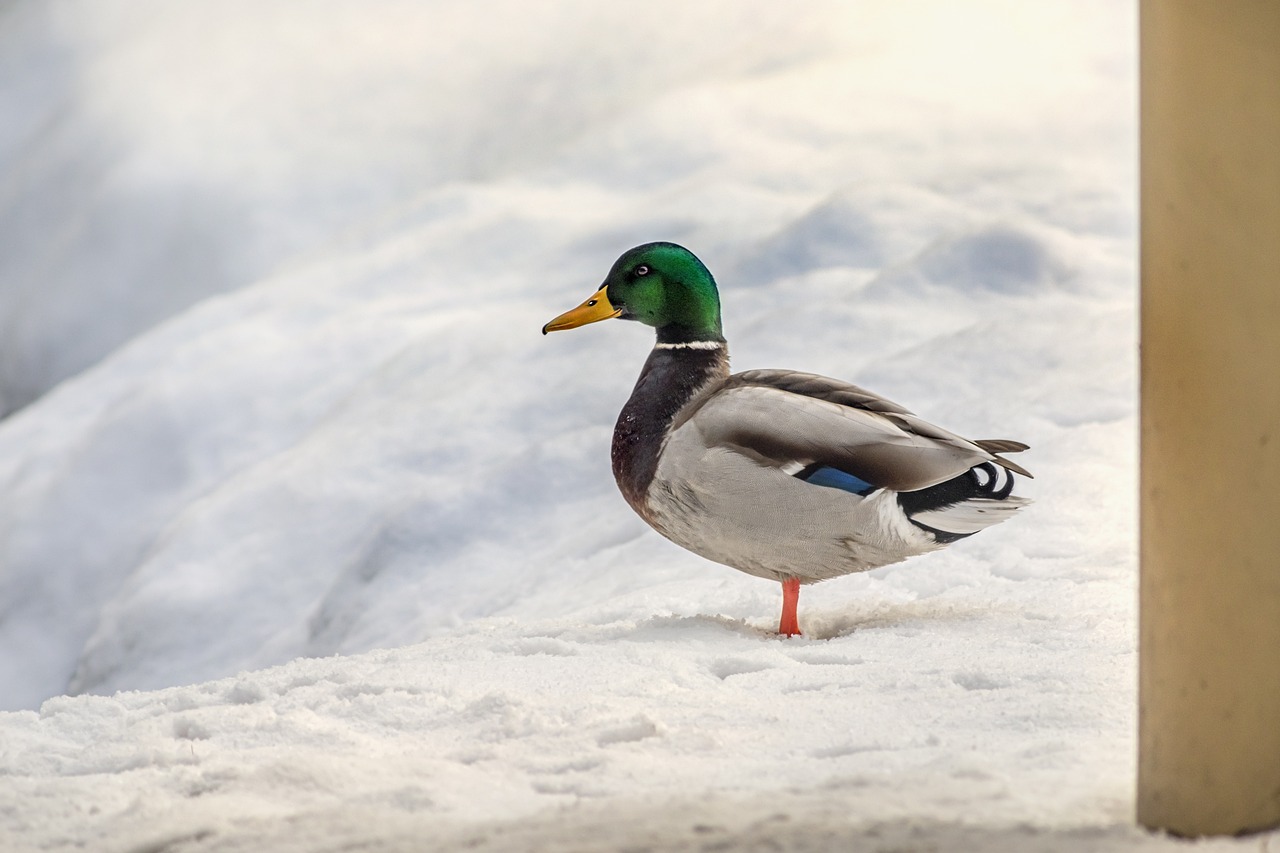The Mallard (Anas platyrhynchos), also known as the wild duck, is a species of dabbling duck found in various habitats across North America, Europe, Asia, and parts of Africa. Here’s some information about this familiar waterfowl species:
- Appearance: Male Mallards, known as drakes, have a distinctive iridescent green head, white neck ring, chestnut-brown breast, gray body, and a curled black central tail feather. Females, called hens, have mottled brown plumage, a duller orange bill, and a brownish-orange coloration on their legs and feet. Both sexes have a blue patch on their wings called a speculum.
- Habitat: Mallards are adaptable ducks and can be found in a wide range of freshwater habitats, including lakes, ponds, rivers, marshes, and wetlands. They are also commonly found in urban parks, golf courses, and agricultural fields with water sources.
- Behavior: Mallards are dabbling ducks, meaning they feed primarily on the surface of the water by tipping forward and grazing on aquatic plants, seeds, insects, and small invertebrates. They may also upend themselves to reach food below the surface. Mallards are social birds and often gather in flocks, especially during migration and winter.
- Migration: Mallards are migratory birds, with populations in North America and Eurasia undertaking seasonal movements between breeding and wintering grounds. Some Mallards are year-round residents in milder climates, while others migrate long distances to escape harsh winter conditions.
- Breeding: Mallards breed in the spring and summer months, building nests on the ground near water or in dense vegetation. The female incubates a clutch of eggs (usually 8-12) for about 28 days, and both parents care for the ducklings after hatching. Mallard ducklings are precocial, meaning they are born with down feathers and are capable of feeding themselves shortly after hatching.
- Conservation: Mallards are widespread and abundant, with healthy populations across their range. However, they face threats from habitat loss, pollution, hunting, predation, and collisions with vehicles. Conservation efforts aimed at protecting wetland habitats, preserving nesting sites, and regulating hunting are important for the long-term survival of Mallards and other waterfowl species.
Overall, the Mallard is one of the most recognizable and well-studied duck species, appreciated by birdwatchers and nature enthusiasts for its beauty, adaptability, and important ecological role in wetland ecosystems.
Visited 164 times, 35 visit(s) today
Views: 303
Subscribe to the newsletter:
